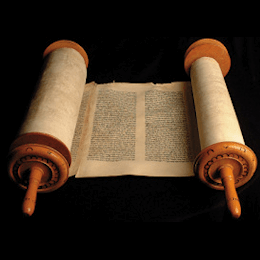Textus Receptus Bibles
Masoretic Text 1524
Old Testament
| 31:1 | הוי הירדים מצרים לעזרה על סוסים ישׁענו ויבטחו על רכב כי רב ועל פרשׁים כי עצמו מאד ולא שׁעו על קדושׁ ישׂראל ואת יהוה לא דרשׁו׃ |
| 31:2 | וגם הוא חכם ויבא רע ואת דבריו לא הסיר וקם על בית מרעים ועל עזרת פעלי און׃ |
| 31:3 | ומצרים אדם ולא אל וסוסיהם בשׂר ולא רוח ויהוה יטה ידו וכשׁל עוזר ונפל עזר ויחדו כלם יכליון׃ |
| 31:4 | כי כה אמר יהוה אלי כאשׁר יהגה האריה והכפיר על טרפו אשׁר יקרא עליו מלא רעים מקולם לא יחת ומהמונם לא יענה כן ירד יהוה צבאות לצבא על הר ציון ועל גבעתה׃ |
| 31:5 | כצפרים עפות כן יגן יהוה צבאות על ירושׁלם גנון והציל פסח והמליט׃ |
| 31:6 | שׁובו לאשׁר העמיקו סרה בני ישׂראל׃ |
| 31:7 | כי ביום ההוא ימאסון אישׁ אלילי כספו ואלילי זהבו אשׁר עשׂו לכם ידיכם חטא׃ |
| 31:8 | ונפל אשׁור בחרב לא אישׁ וחרב לא אדם תאכלנו ונס לו מפני חרב ובחוריו למס יהיו׃ |
| 31:9 | וסלעו ממגור יעבור וחתו מנס שׂריו נאם יהוה אשׁר אור לו בציון ותנור לו בירושׁלם׃ |

Masoretic Text 1524
The Hebrew text of the Old Testament is called the Masoretic Text because in its present form it is based upon the Masora—the Hebrew, textual tradition of the Jewish scholars known as the Masoretes (or Masorites). The Masoretes were rabbis who made it their special work to correct the faults that had crept into the text of the Old Testament during the Babylonian captivity, and to prevent, for the future, its being corrupted by any alteration. They first separated the apocryphal from the canonical books, and divided the latter into twenty-two books, being the number of letters in the Hebrew alphabet. Then they divided each book into sections and verses.
There is a great difference of opinion as to when the Masoretic Text was written, but it was probably accomplished in the 10th -11th century. Several editions existed, varying considerably, but the received and authoritative text is that of Jacob ben-chayim ibn Adonijah, who carefully sifted and arranged the previous works on the subject. It was published in 1524.